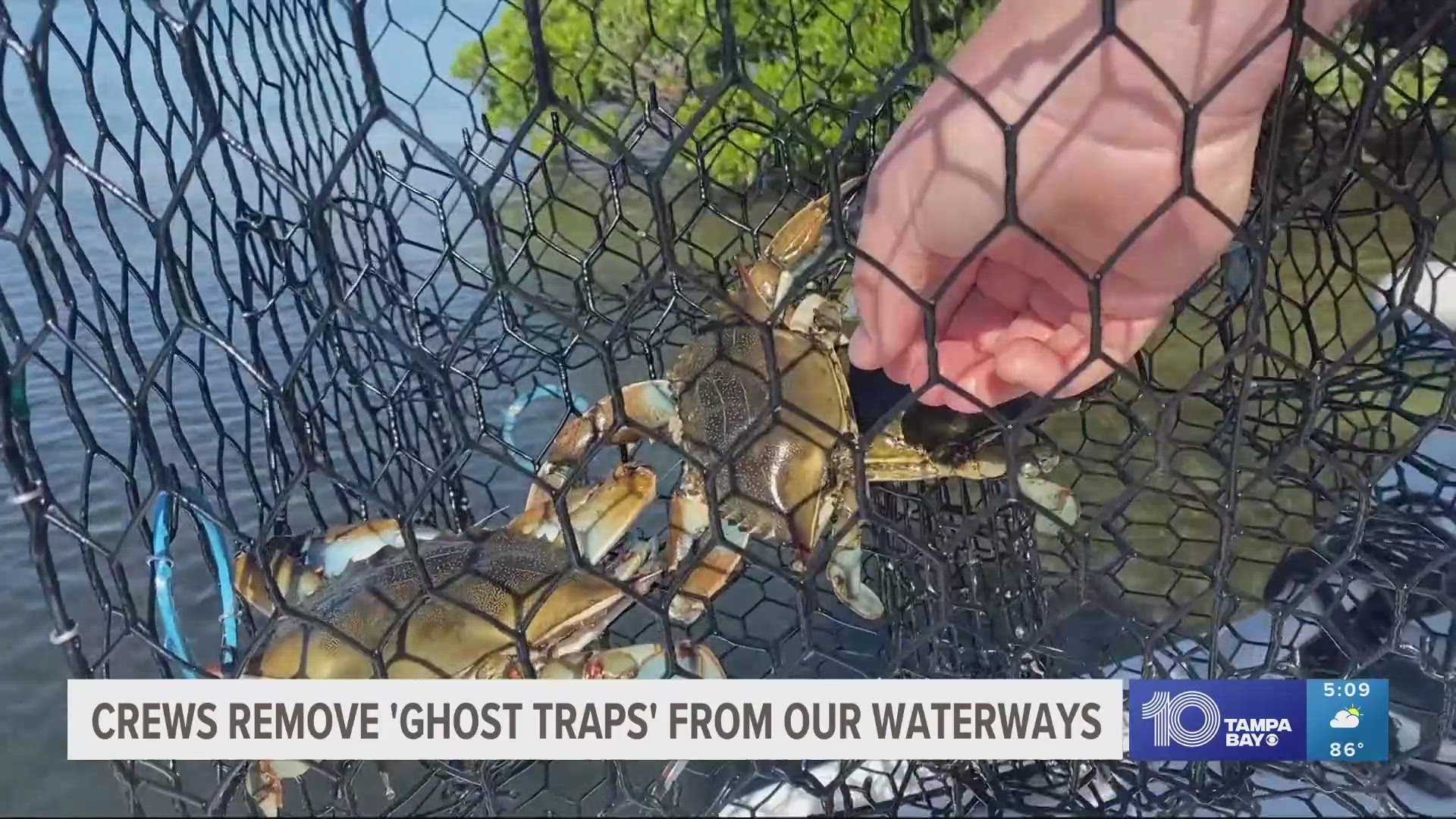ST. PETERSBURG, Fla. — As we celebrate Halloween, there's a ghost that haunts below the water's surface in Tampa Bay – and this spooky devil becomes a graveyard for countless marine life.
Ghost gear is abandoned fishing gear, like crab traps, fishing nets and other items that harm marine animals. While it may not sound too spooky, the equipment holds crabs and fish hostage until they starve to death, becoming bait for the next victim.
"According to FWC state research, the expectation is around 10% of traps that are put into the water go lost and missing to their angler," Captain Neill Holland, founder of Ocean Aid 360, explained.
This means thousands of crabs in Tampa Bay die an untimely death each year. For each boat that participates in removing ghost gear from the water, it's estimated they remove 10 to 30 traps on a single trip and in each one of these traps, it's estimated there are dozens of crabs stuck inside – dead and alive.
Ocean Aid 360 and Ocean Conservancy work together to rid the waters of forgotten fishing gear.
"It's one of the most dangerous types of debris out there for marine wildlife," J.P. Brooker, director of Florida Conservation for Ocean Conservancy, said. "But also for the general health of our ocean, that gear is often plastic, it breaks down, it degrades in the marine environment."
Without human help, the health of our marine life is at risk.
"It's heartbreaking to see any kind of havoc being wrecked on our marine resources, right? Clean, healthy water drives our tourist economy, it drives our way of life, really, it's our cultural identity," Brooker said.
While the traps aren't lost on purpose, they can effectively imprison crabs for hundreds of years if not removed from the water.
"These traps remain in the waterways, and they're they're left there until they degrade," Holland explained. "So all over Florida and coastal states or all around the U.S. and abroad."
After Ocean Aid 360 pulls ghost crab traps from the water, they're sent off to the South Carolina Department of Natural Resources. The traps are mixed with a concrete slurry solution. Once cured, the concrete slabs are placed along the shoreline where they become reefs and oyster beds, all while preventing erosion.
Malique Rankin is a general assignment reporter with 10 Tampa Bay. You can email her story ideas at mrankin@10tampabay.com and follow her Facebook, Twitter, and Instagram pages.

